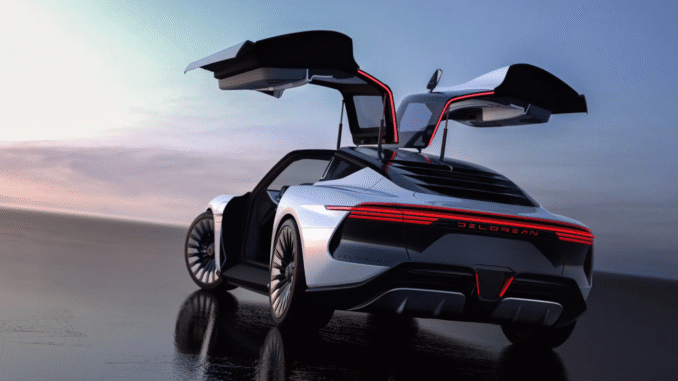
The Future of Electric Vehicles: What to Expect in the Next 5 Years
The automotive industry is undergoing a major transformation, and at the forefront of this revolution is the rise of electric vehicles (EVs). With increasing concerns over climate change, rising fuel costs, and technological advancements, electric vehicles are set to become more mainstream in the coming years. But what does the future hold for electric cars? In the next five years, significant developments are expected that will reshape the EV market, making them more affordable, efficient, and accessible for consumers worldwide.
This article delves into the major trends and innovations that are likely to define the electric vehicle industry over the next half-decade.
1. Expansion of EV Charging Infrastructure
One of the primary challenges limiting the adoption of electric vehicles today is the availability and accessibility of charging stations. While EVs are gaining popularity, many potential buyers remain hesitant due to concerns about long charging times and limited charging infrastructure.
However, in the next five years, the global expansion of charging infrastructure is expected to accelerate significantly. Governments, private companies, and utilities are investing heavily in building more charging stations, particularly in urban areas, highways, and residential locations. In addition to standard charging stations, ultra-fast chargers are being developed that can replenish a car’s battery in a matter of minutes, significantly reducing “range anxiety” for drivers.
Moreover, innovations in wireless charging technology are emerging, which could allow vehicles to charge while parked or even while driving over certain roadways embedded with charging pads. As a result, charging will become more convenient, integrated, and efficient, supporting the widespread adoption of EVs.
Benefits: Reduced range anxiety, greater convenience for EV owners, and an accelerated shift to electric transportation.
2. Falling Battery Prices and Improved Energy Density
The cost of EV batteries has been a significant barrier to the affordability of electric vehicles. Although prices have been steadily falling over the past decade, further cost reductions are expected in the next five years, thanks to advancements in battery technology, improved manufacturing processes, and economies of scale.
Battery energy density—the amount of energy that can be stored in a given volume or weight of the battery—is also set to improve. This means that in the near future, EVs will be able to travel further on a single charge, making them more practical for long-distance travel. Solid-state batteries, which offer higher energy densities and greater safety than traditional lithium-ion batteries, are particularly promising and could become mainstream within the next five years.
In addition, the recycling of battery materials will become more efficient, ensuring a more sustainable and environmentally friendly approach to battery production and disposal.
Benefits: Lower EV prices, longer driving ranges, and reduced environmental impact from battery production and disposal.
3. Government Incentives and Regulations
Governments around the world are implementing stricter environmental regulations and offering incentives to promote the adoption of electric vehicles. Over the next five years, these policies will likely become even more aggressive, as countries aim to meet their climate goals and reduce dependence on fossil fuels.
Many countries, including the European Union, China, and parts of the U.S., have set ambitious targets to phase out the sale of new internal combustion engine (ICE) vehicles in favor of zero-emission vehicles. For instance, several European nations plan to ban the sale of new petrol and diesel cars by 2030 or 2035, which will significantly boost the demand for electric vehicles in the coming years.
Incentives such as tax credits, rebates, reduced registration fees, and exemptions from tolls and congestion charges are expected to continue or expand, making EVs more attractive to consumers. The infrastructure investment and financial incentives offered by governments will be critical in driving the mass adoption of electric cars.
Benefits: Increased government support for EV adoption, regulatory pressure on automakers to innovate, and financial incentives for consumers.
4. Widespread Adoption of Autonomous EVs
The future of electric vehicles is not just about powertrains and batteries—it’s also about automation. Over the next five years, we can expect significant advancements in autonomous driving technology. Electric vehicles are already well-positioned to integrate self-driving technologies because their electric drivetrains are easier to control than traditional internal combustion engines.
Companies like Tesla, Waymo, and others are making great strides in developing fully autonomous electric vehicles, and in five years, it’s likely that we will see some level of mass-market adoption of self-driving EVs. In urban areas, autonomous electric vehicles (AEVs) could become a common sight, particularly for shared ride-hailing services, further reducing the need for private car ownership and transforming the way people think about transportation.
These autonomous vehicles will rely on sophisticated sensors, machine learning algorithms, and a network of connected infrastructure to navigate and interact with their environment. As these systems become more reliable, we could see a shift toward a future where self-driving EVs dominate our streets.
Benefits: Safer roads, reduced traffic congestion, and the potential for a more sustainable transportation system.
5. Increased Focus on Sustainability
As awareness of environmental issues continues to grow, there will be a greater emphasis on sustainability within the electric vehicle industry. While EVs are already much cleaner than their gasoline counterparts, the production process for both cars and batteries still has a carbon footprint.
Over the next five years, we can expect to see further innovations aimed at making EV production more sustainable. For example, automakers are exploring alternative materials for vehicle construction, such as recycled plastics, sustainable metals, and plant-based materials, which will reduce the overall environmental impact.
Furthermore, manufacturers will likely increase their focus on ensuring the entire supply chain—from raw material extraction to manufacturing and end-of-life recycling—is as environmentally friendly as possible. The integration of renewable energy sources into the charging infrastructure will also be essential in making EVs a truly green transportation option.
Benefits: Lower environmental impact, reduced resource consumption, and greater sustainability in the automotive industry.
6. Expansion of EV Model Options
As electric vehicles become more mainstream, consumers can expect a wider variety of EV models to choose from. While electric sedans and compact cars currently dominate the market, automakers are rapidly expanding their electric offerings to include a broader range of vehicle types.
By 2025, consumers will have access to a growing selection of electric SUVs, trucks, and even luxury and performance cars. For example, electric pickups like the Ford F-150 Lightning and Tesla Cybertruck are already in the works and expected to hit the market soon. These models are aimed at consumers who have previously been hesitant to switch to EVs due to a lack of options that suit their lifestyle or work needs.
Automakers like Volkswagen, GM, and Rivian are also expected to roll out electric versions of their popular models, offering consumers the flexibility to choose an electric vehicle that fits their specific needs, from family cars to work vehicles and recreational models.
Benefits: More choices for consumers, greater adoption of electric vehicles across different sectors, and tailored solutions for various lifestyles.
7. Smart Charging and Vehicle-to-Grid (V2G) Technology
The development of smart charging systems and vehicle-to-grid (V2G) technology will play a key role in the future of electric vehicles. Smart charging allows EVs to charge during off-peak hours, reducing the strain on the grid and lowering costs for consumers. V2G technology enables EVs to not only draw power from the grid but also return excess power to the grid when needed, turning electric vehicles into mobile energy storage systems.
This technology will not only benefit individuals but also contribute to the stability and sustainability of the electrical grid. As more EVs are integrated into smart energy networks, the grid will become more resilient, flexible, and capable of accommodating renewable energy sources like wind and solar.
Benefits: Reduced energy costs, enhanced grid stability, and the potential for EVs to act as mobile energy storage units.
Conclusion
The future of electric vehicles is promising, with a wealth of advancements expected over the next five years. From increased charging infrastructure and falling battery costs to the rise of autonomous EVs and a greater emphasis on sustainability, the EV market is set to become more dynamic and accessible than ever before. As technology continues to evolve and governments ramp up their support, the shift toward electric vehicles will not only revolutionize the automotive industry but also contribute to a cleaner, greener, and more sustainable future for all.

